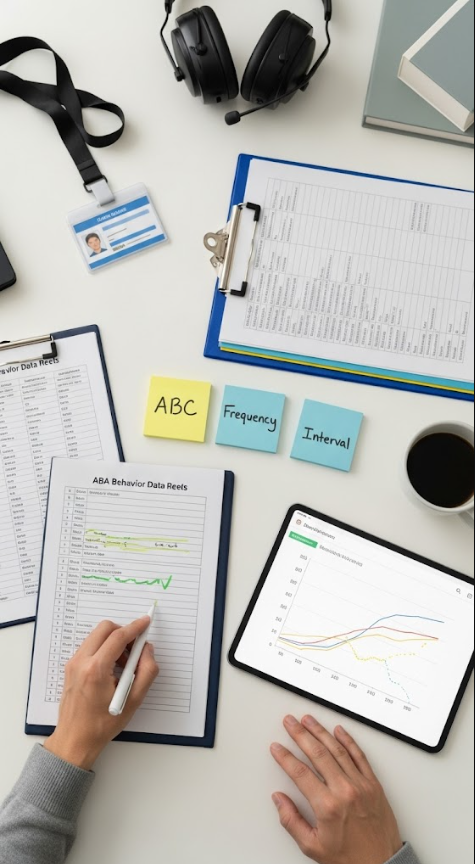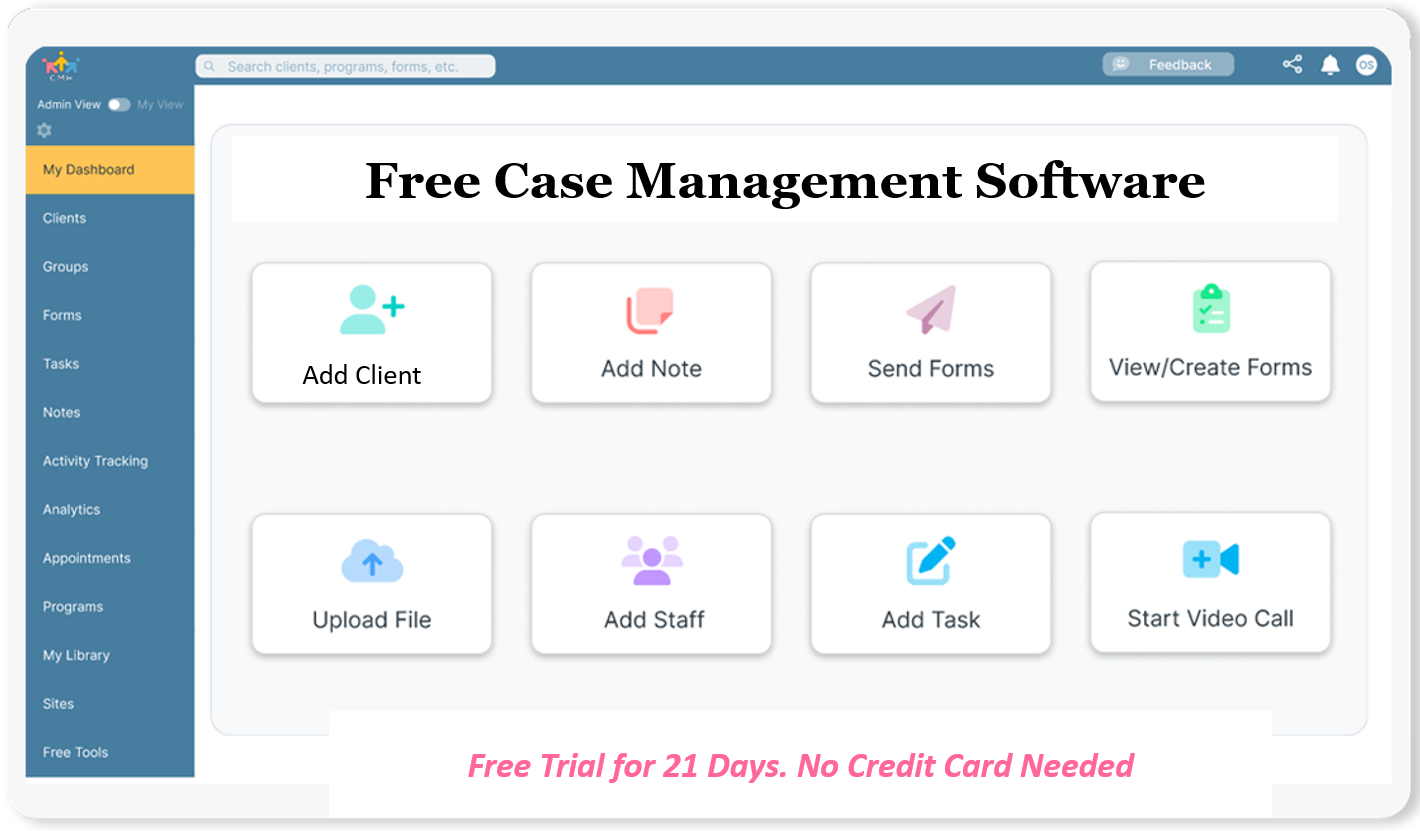Introduction: Why Your ABA Data Collection Process Might Be Holding You Back
Are you tired of feeling overwhelmed by data collection in your ABA practice? If you’ve ever felt like your “aba behavior data sheets” aren’t giving you the insights you need, or you’re confused about the difference between ABC data aba and other forms of data, you’re not alone.
In this guide, you’ll learn how to improve your data collection process so that it actually supports behavior change, not just paperwork. Whether you’re a behavior technician, BCBA, RBT, or special education teacher, you’ll walk away with practical steps to upgrade your approach and avoid the most common mistakes professionals make.
Far too often, people collect data that looks complete, but fails to communicate anything meaningful. Sheets are filled with vague behavior descriptions. Triggers and consequences are misinterpreted or missed altogether. Sometimes, people jot down notes after the session, long after context has faded. And when it’s time to make decisions? The data falls short.
Think of Carol, a new RBT working in a school district. She was using basic data sheets to track behaviors, but her notes were inconsistent. Antecedents were described vaguely, and she forgot to tally behaviors when she got busy. Her BCBA couldn’t extract patterns. They had the data, but not the clarity.

This guide will help you avoid that. You’ll learn how to:
- Capture more useful data in less time
- Use tools like ABC logs, behavior sheets, and interval tracking more effectively
- Improve accuracy and consistency in your documentation
We’ve also included a free downloadable checklist to make it easier to apply what you learn, perfect for busy professionals who want to do it right.
Pro Tip: The quality of your ABA program depends on the quality of your data. When your sheets are messy or incomplete, your treatment plans suffer.
Let’s get started
Watch this overview video or read the detailed guide below.
Table of Contents – ABA Data Guide
- Understanding the Role of Data in ABA
- How to Use ABC Data to Understand Behavior
- Smart Use of Behavior Sheets and Tracking Systems
- Choosing the Right Type of Data Collection: Interval, Frequency & Anecdotal
- Examples from the Field: From First Trials to Digital Tools
- Making Every Moment Count: Frequency, Interval, and First Trial Data
- Download the Free Checklist
- How Professionals Collect Data (vs. Everyone Else)
- Final Thoughts – ABA Data & Examples
- Frequently Asked Questions
Pro Tip: Use this article as a reference. Each section is designed to help you build confidence in collecting the kind of data that drives real progress.
Understanding the Role of Data in ABA
Data is the heartbeat of behavior analysis. Without it, you’re just guessing. Strong data helps you track progress, adjust programs, and communicate outcomes clearly to families and supervisors. It’s what separates good practitioners from great ones.
If you’re documenting aggressive behavior or tracking language development, your notes need to reflect more than just surface-level observations. They need to be objective, measurable, and consistent. That’s where structured data comes in.
Professionals often use a combination of behavior logs and observation tools. These can include simple daily sheets or more advanced tracking systems that cover behavior frequency, conditions, and consequences.
Pro Tip: Before each session, review your goals and choose your data method in advance. If you don’t define what success looks like, you won’t know if you’re reaching it.

How to Use ABC Data to Understand Behavior
One of the most valuable tools in behavior analysis is the ABC model: Antecedent, Behavior, Consequence. This framework allows you to understand not just what happened, but why.
The antecedent is the trigger, the behavior is the observable action, and the consequence is what happens immediately after. When used correctly, ABC data helps you identify patterns, spot reinforcers, and create effective intervention strategies.
Too many people treat ABC logs like journals instead of tools. They write “had a tantrum” instead of describing what actually occurred. Was the child screaming, hitting, throwing objects? What happened right before and after? Precision matters.
Recording good ABC examples can help new staff build fluency. Over time, these examples provide a behavioral snapshot that helps teams identify trends and make informed decisions.
Pro Tip: Keep your language objective. Don’t say “he got upset.” Say “he yelled and stomped his foot after being asked to clean up.”
Smart Use of Behavior Sheets and Tracking Systems
The right sheet can make or break your session. Behavior data sheets should be clear, structured, and tailored to the goals you’re working on. These aren’t just forms, they’re planning tools.
Use your sheet to track behavior frequency, duration, and even prompts used. Some professionals design their own templates, while others use pre-made sheets that align with common ABA goals.
If you’re working in a setting where multiple people interact with the same client, consistency becomes even more important. Everyone needs to be documenting the same way. That’s where structured tracking systems shine.
Some teams move beyond paper and use digital platforms for real-time tracking and reporting. These tools often provide graphing features and trend analysis with far less effort than manual entry.
Pro Tip: Use behavior sheets to support communication with families. When you can show graphed progress, it builds trust and highlights results.
Choosing the Right Type of Data Collection: Interval, Frequency & Anecdotal
Not all data is created equal. The type of behavior you’re tracking should determine the kind of data you collect. If you’re monitoring how often a child leaves their seat, frequency tracking is ideal. If you’re studying how often a student is off-task during a 30-minute session, interval tracking will give you a broader overview.
And for behaviors that don’t occur often, or are too complex to quantify, a brief anecdotal description can be incredibly helpful. Just be sure to keep it objective and focused on what can be seen or heard.
Using multiple data methods gives you a complete picture of behavior. It also helps you decide which interventions are working and which ones aren’t.
Pro Tip: Don’t rely on memory. Use timers, counters, or tracking apps to collect accurate interval or frequency data.
ABA Data Collection Examples from the Field: From First Trials to Digital Tools
If you’re working with early learners, first-trial data helps you measure whether skills are being generalized and maintained. For example, you might track whether a child can independently request an item on the first try without prompting.
Some providers use advanced systems like Catalyst to automate data collection. These platforms can sync across sessions, generate real-time graphs, and reduce the need for manual calculations. They’re particularly useful when you’re juggling multiple programs or locations.
Whether you’re using simple clipboards or smart apps, the goal remains the same: track what matters and make it meaningful.
Pro Tip: Choose the tool that fits your workflow. High-tech isn’t always better if it slows you down or complicates your session.
Making Every Moment Count: ABA Data Collection Frequency, Interval, and First Trial Data
Depending on the behavior you are targeting, different data collection methods will be more effective. If you’re tracking a behavior that has a clear beginning and end, such as hitting or calling out, “frequency data aba” is your best friend. Frequency data simply involves counting how many times a behavior occurs within a specific period. It’s a straightforward and powerful way to measure a behavior’s rate.
For behaviors that happen continuously or are difficult to count, “interval aba” is a better choice. With interval data, you break the observation period into smaller intervals and record whether the behavior occurred at all during that interval (partial interval) or for the entire duration (whole interval). This method provides a useful estimate of how often a behavior is happening.
Finally, “first trial data aba” is essential for measuring skill acquisition. This type of data tells you whether a client performed a new skill correctly on the very first attempt. If a client consistently performs a skill correctly on the first trial, it’s a strong indicator that the skill has been mastered and is no longer reliant on prompts or extra support.
Pro Tip: Choose your data collection method carefully. Frequency data is great for discrete behaviors, while “interval aba” is better for behaviors that are hard to count. Use “first trial data aba” specifically for tracking the mastery of new skills.
Download the Free ABA Data Collection Checklist
We’ve put together a free ABA Data Collection Checklist to help you streamline your sessions and boost your confidence.
It covers:
- What to prepare before each session
- Key things to track during therapy
- How to review and organize your notes after the session
- Signs you may need to adjust your data collection strategy
✅ [Download the Free ABA Data Collection Checklist Now]
It’s ideal for RBTs, educators, BCBAs, and anyone looking to clean up their workflow.
Pro Tip: Keep a laminated version in your therapy bag or clipboard. You’ll never miss a step, even on the busiest days.
How Professionals Collect Data (vs. Everyone Else)
There’s a clear difference between those who collect data casually and those who treat it as a clinical tool.
Here’s what casual tracking looks like:
- Vague descriptions (“got upset”)
- Sheets filled out hours later
- Inconsistent use of ABCs or behavior tallies
Now contrast that with a professional approach:
- Objective, measurable behavior descriptions
- Real-time tracking using structured sheets
- Consistent systems that allow for easy review and adjustments
Professionals use their data to make decisions. Everyone else uses it to fill space.
Pro Tip: Make data collection part of your routine, not an afterthought. The more automatic it becomes, the better your results.
Final Thoughts – ABA Data & Examples
Data is the engine that drives ABA forward. Whether you’re working on skill-building or behavior reduction, your documentation should reflect what’s really happening, and guide your next move.
With the right tools and techniques, you can transform your data collection from something you “have to do” into a process that powers real progress.
Don’t forget to grab the free checklist above. It’s one of the simplest ways to start improving today.
Pro Tip: Revisit your data system every few months. Even the best tools can become stale without regular check-ins and refinements.
Frequently Asked Questions (FAQ)
How should I write ABA data correctly?
Keep your language clear and objective. Focus on what you can observe and measure, not on assumptions or emotions. Avoid vague phrases and stick to facts.
What’s the best way to document ABC behavior data?
Use the Antecedent-Behavior-Consequence format to describe what happened before, during, and after the behavior. The more specific your notes, the more useful your analysis will be.
Should I use frequency or interval data?
It depends on the behavior. Use frequency for behaviors that occur quickly and often. Use interval when tracking longer patterns or attention-based behaviors across time blocks.
Are digital ABA tools better than ABA data collection paper sheets?
Both can work well. Digital ABA data collection tools offer graphs and real-time updates, but paper ABA templates may be easier for in-person sessions with younger learners. Choose what fits your setting.
Can anecdotal notes be part of ABA data?
Yes, as long as they’re written objectively. Anecdotal notes can highlight context, emotions, or subtle environmental factors that numbers alone can’t capture.
Note: Content on this website (casemanagementhub.org) is copyrighted and protected under applicable copyright laws. Unauthorized reproduction, distribution, or use of any content from this Case Management Hub website, without explicit written permission, is strictly prohibited. Read Terms of Use.
Disclaimer: Case Management Hub is an educational resource site. Our content is not medical advice. Always consult a licensed professional for personal guidance. Use of this site does not create a provider-patient relationship. Do not send us personal health information. Read our full disclaimer here: Case Management Hub Disclaimer.






